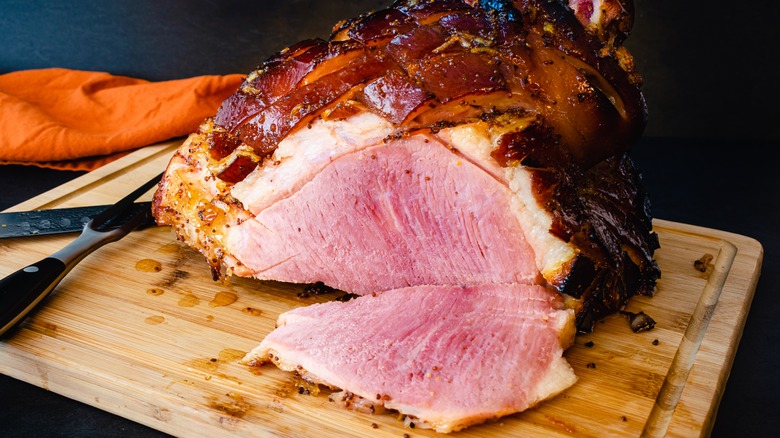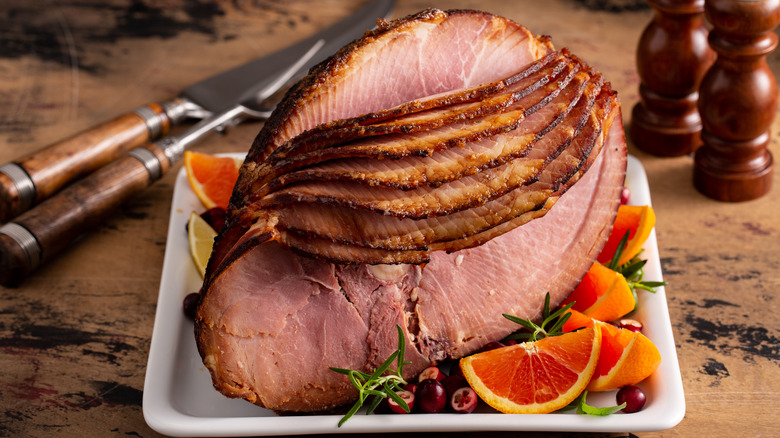Do Bone-In And Boneless Hams Have The Same Shelf Life?
Ham is a versatile meat that comes in a variety of forms. Although it's wildly popular around the holidays, ham is easy to make and perfect for serving any day of the week. It's helpful to know what to look for in a ham when shopping for one. Understanding the different cuts and portions is a good place to start.
Basically, there are bone-in and boneless hams. Bone-in hams are usually shank portions, which come from the lower leg, or butt portions, which are a bit higher on the leg, explains Cathead BBQ. A boneless ham might be canned, or wrapped in a skin, plastic, or paper. Eat Like No One Else writes that a boneless ham is either reconstituted, meaning the bone is removed and the meat is then reshaped into a new form, or it's a carving ham, which means the bone is simply removed and the ham keeps its shape.
Any type of ham usually has a decent shelf life in the refrigerator because of all of the salt and sometimes other additives they contain. Still, exactly how long can you let your ham sit around before you cook it?
The differences are negligible
First, you'll need to know if the ham is cured or uncured because cured meat has a longer shelf life. Thankfully, hams are pretty much always cured but read the label to make sure. The reason they are always cured is because of the salt and additives used to preserve the ham and give it flavor (per Tender Belly).
According to Stoltzfus Meats, both bone-in and boneless hams can last up to 75 days in the refrigerator if they are whole, and up to 60 days for a half ham. However, if the boneless ham is canned ham, it is shelf stable, and doesn't even need to be kept in the fridge. That bad boy can sit in your pantry for about a year, per The Spruce Eats. If you choose a spiral cut or sliced ham, use it up within a week because the more you slice meat, the more it shortens the shelf life, explains eHow.
If freezing your bone-in or boneless ham, it can stay frozen for up to six months. Wrap your ham in aluminum foil or plastic wrap before freezing to help retain moisture. Once you've cooked your ham, don't hang on to the leftovers as long as you would if it was fresh out of the grocery store. Make sure to eat your leftover cooked ham within five days, per the USDA.

